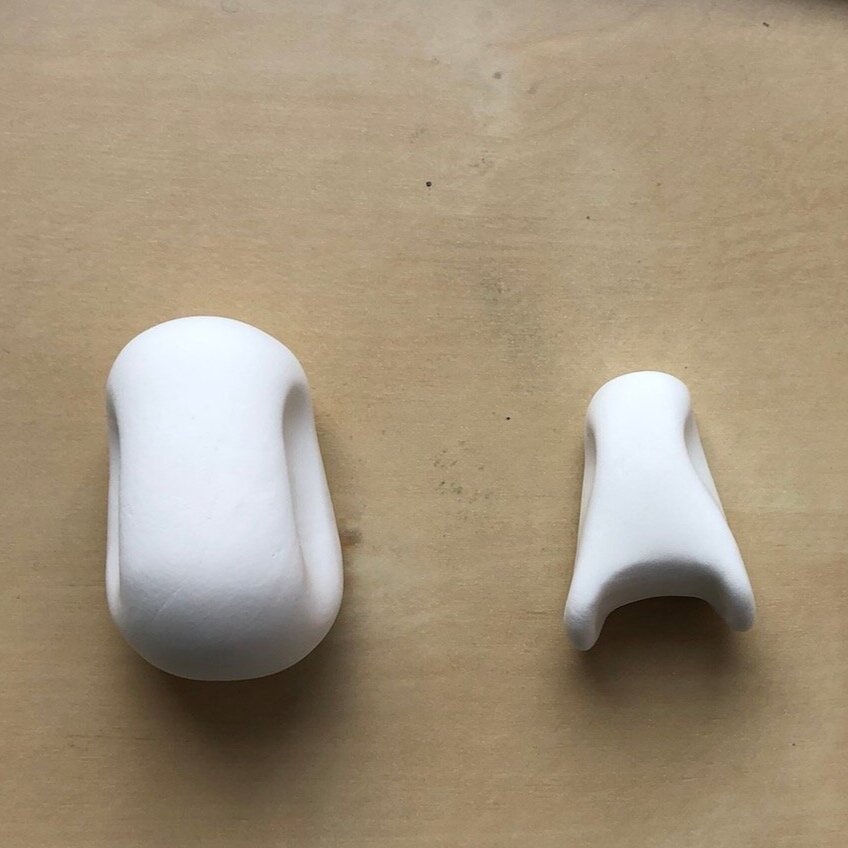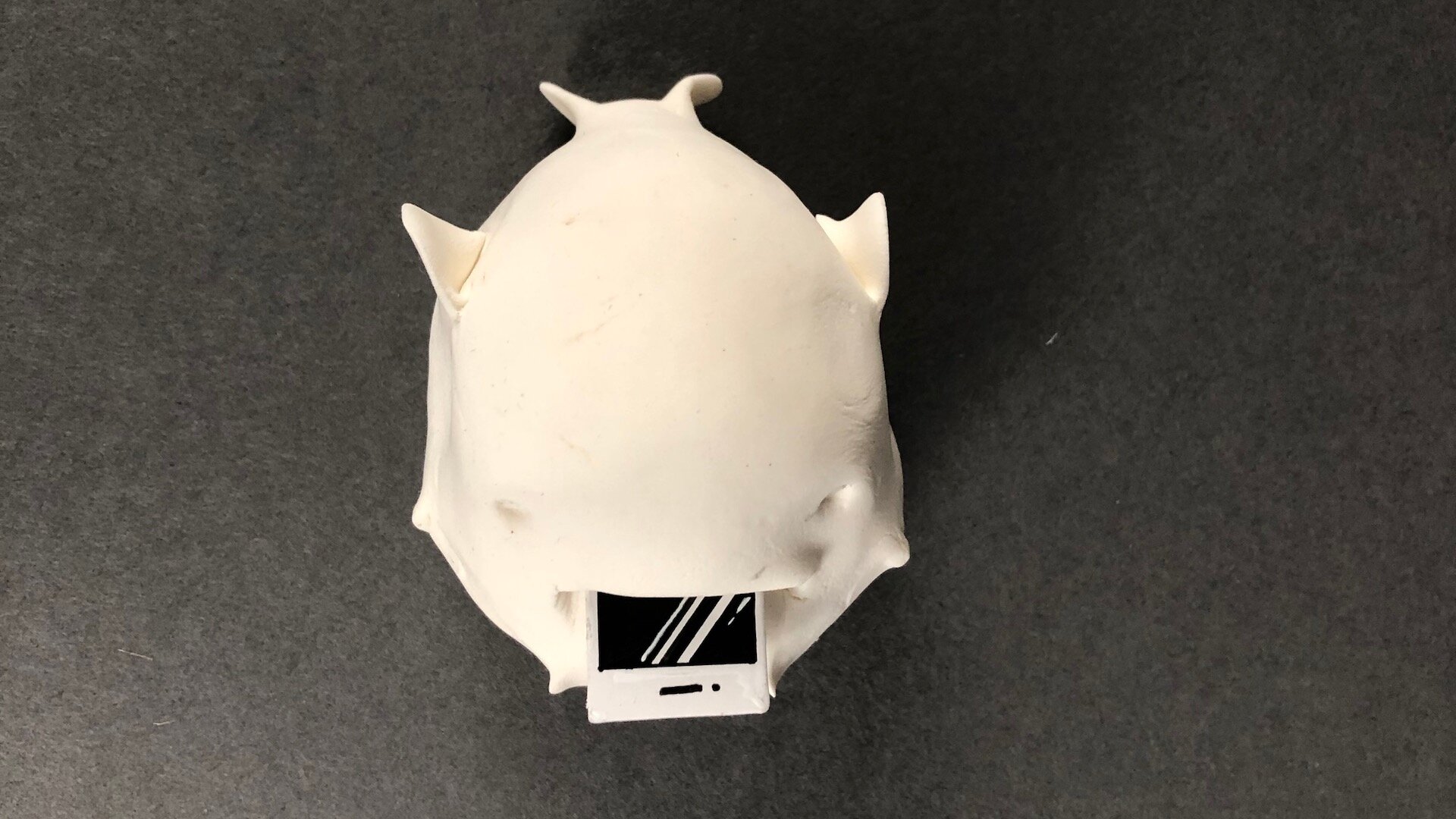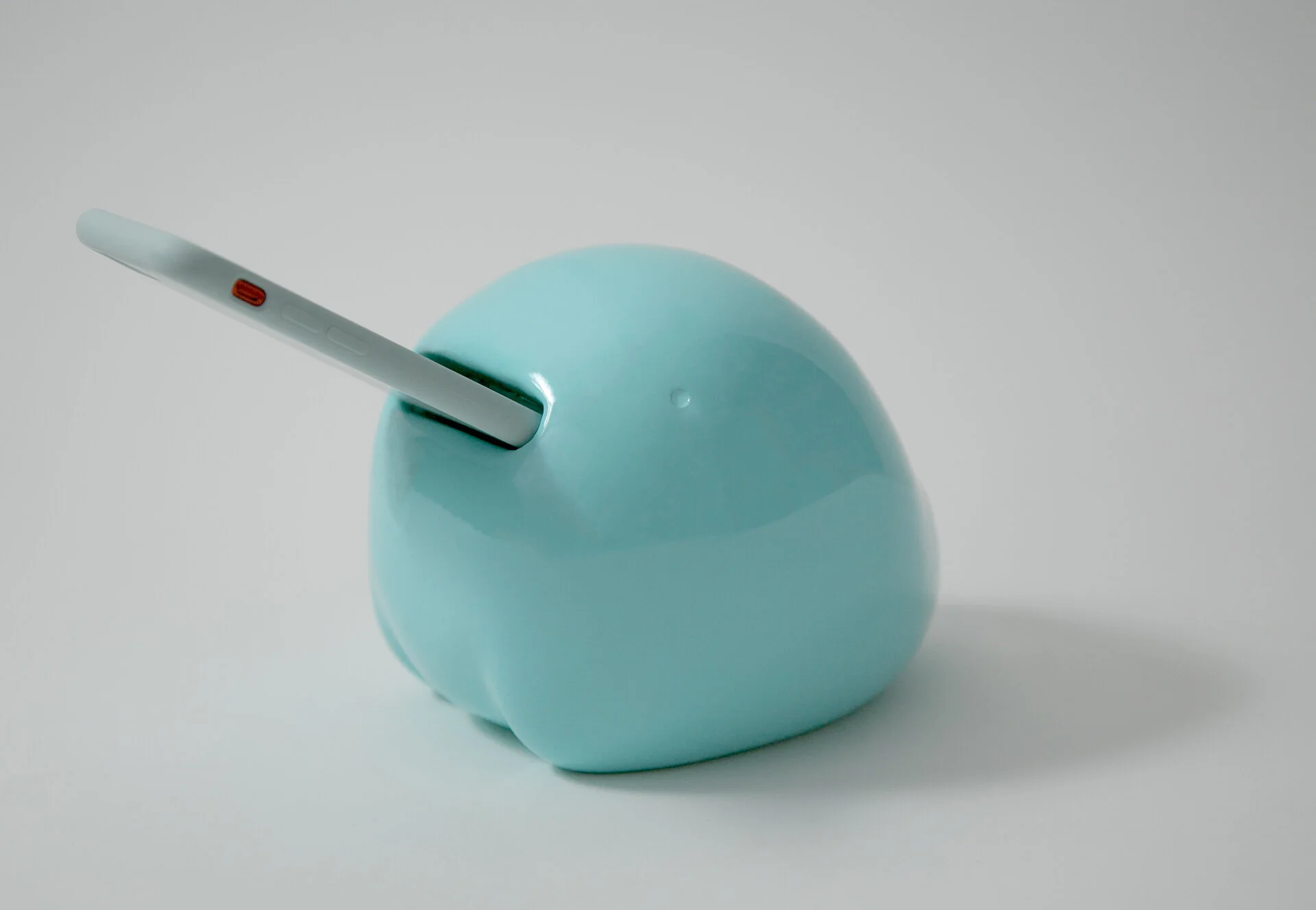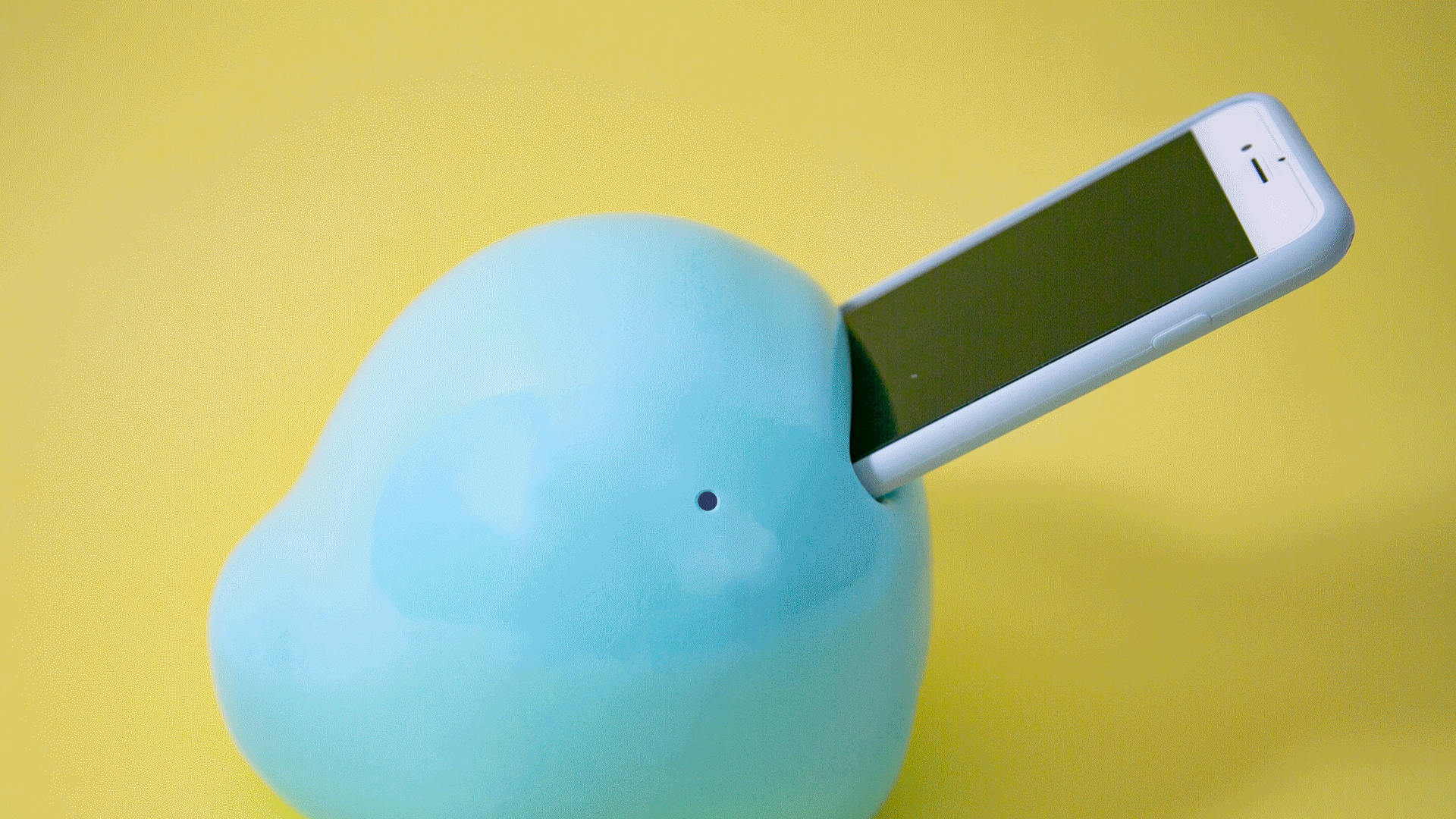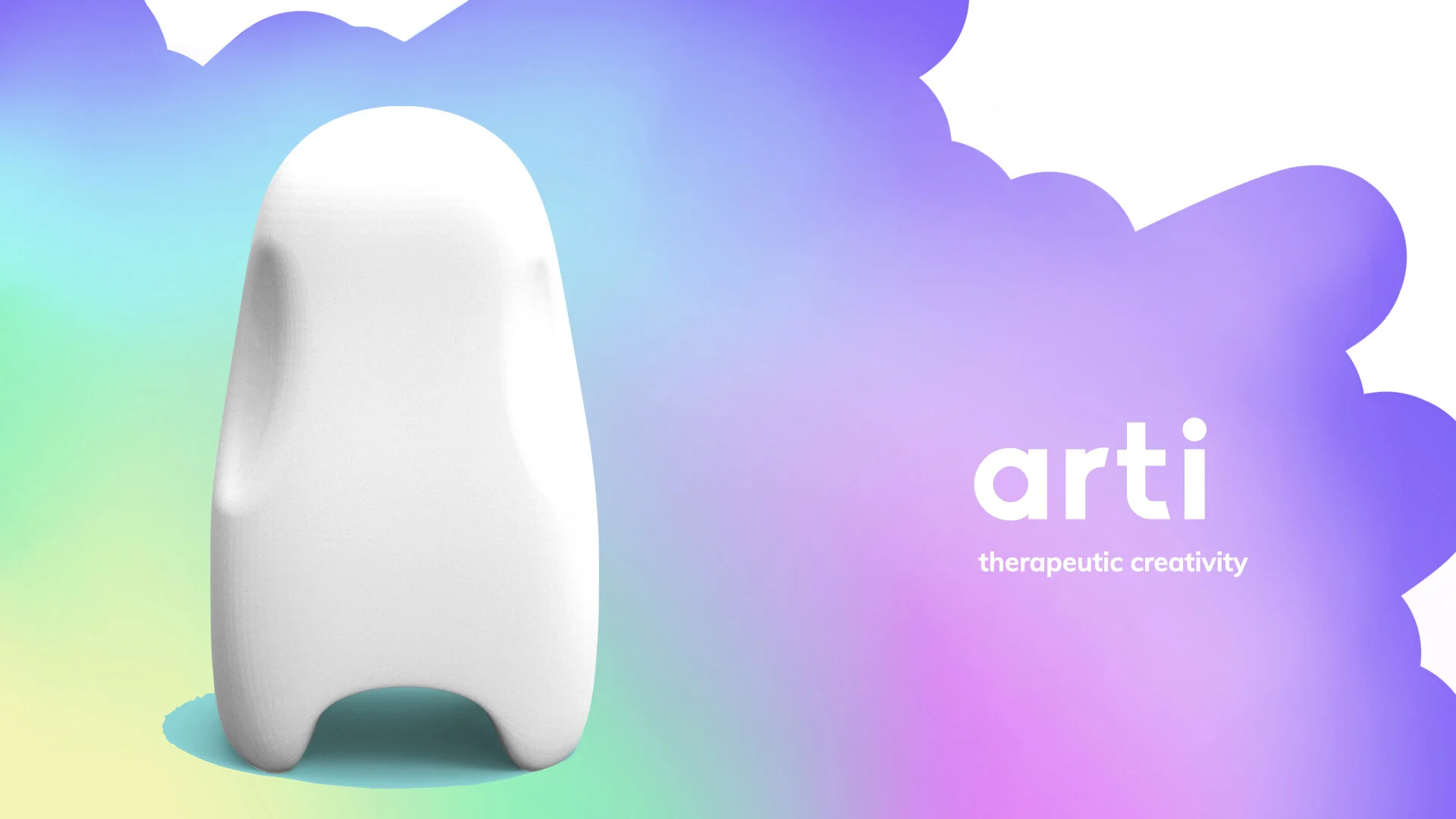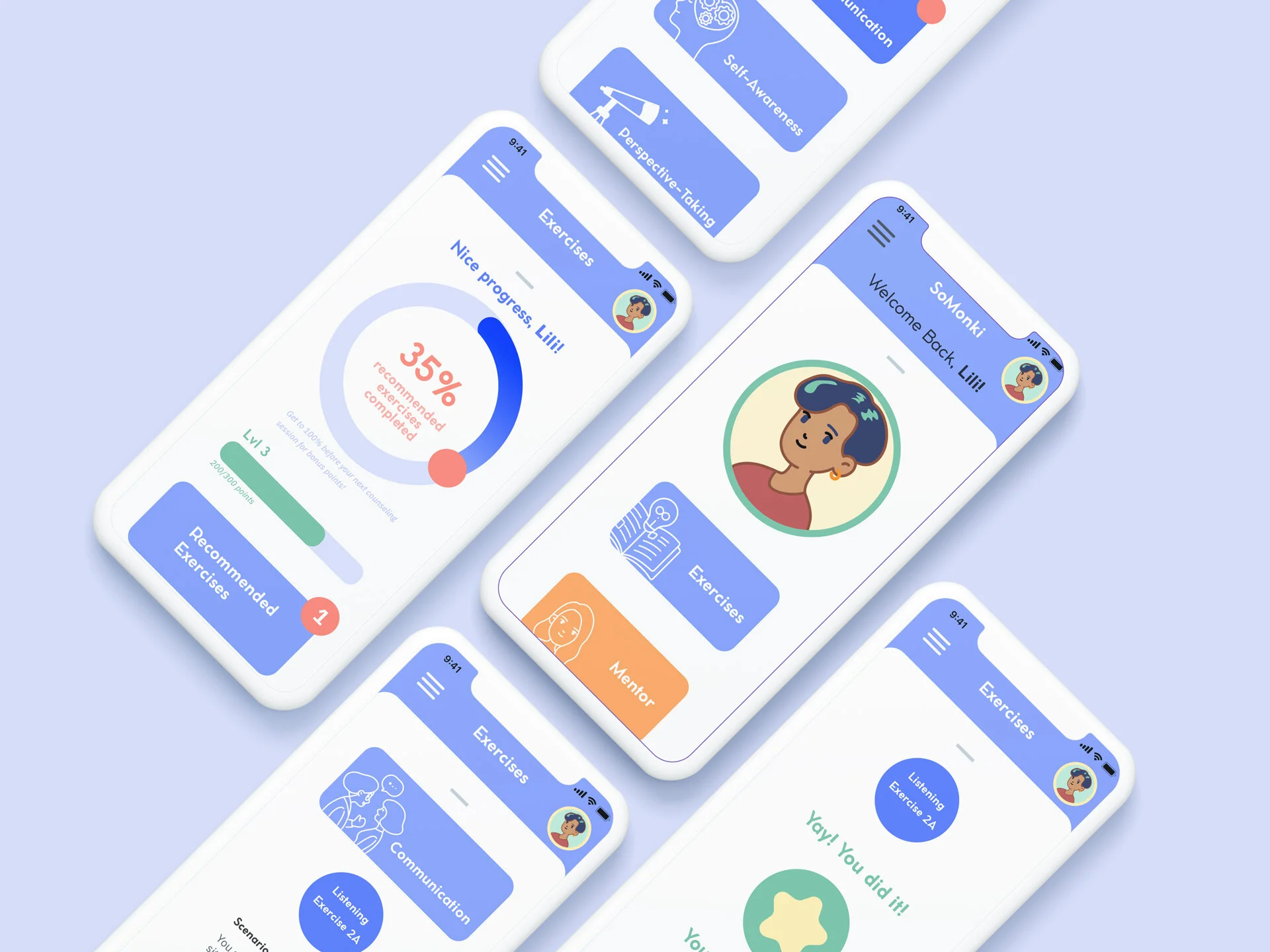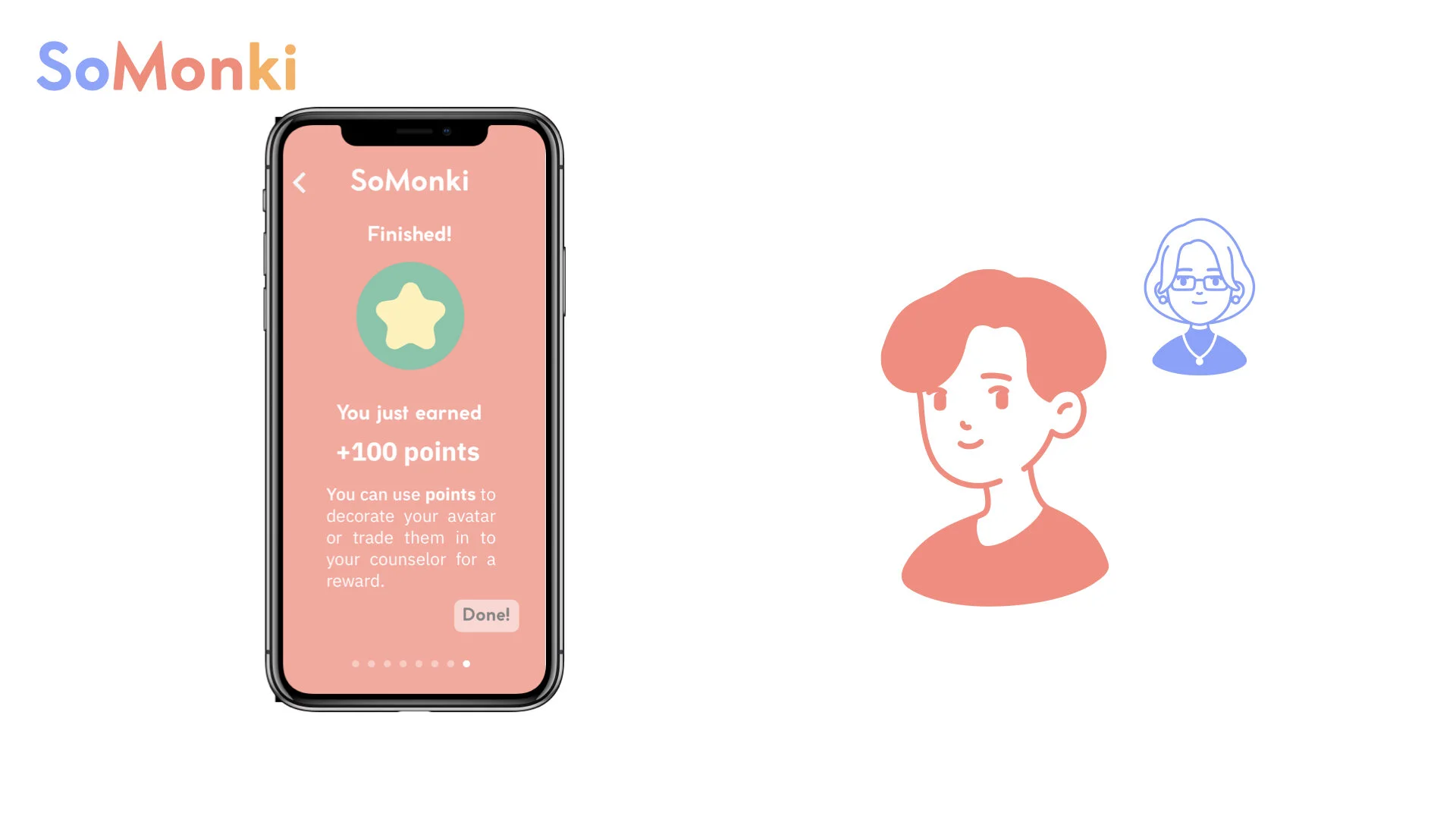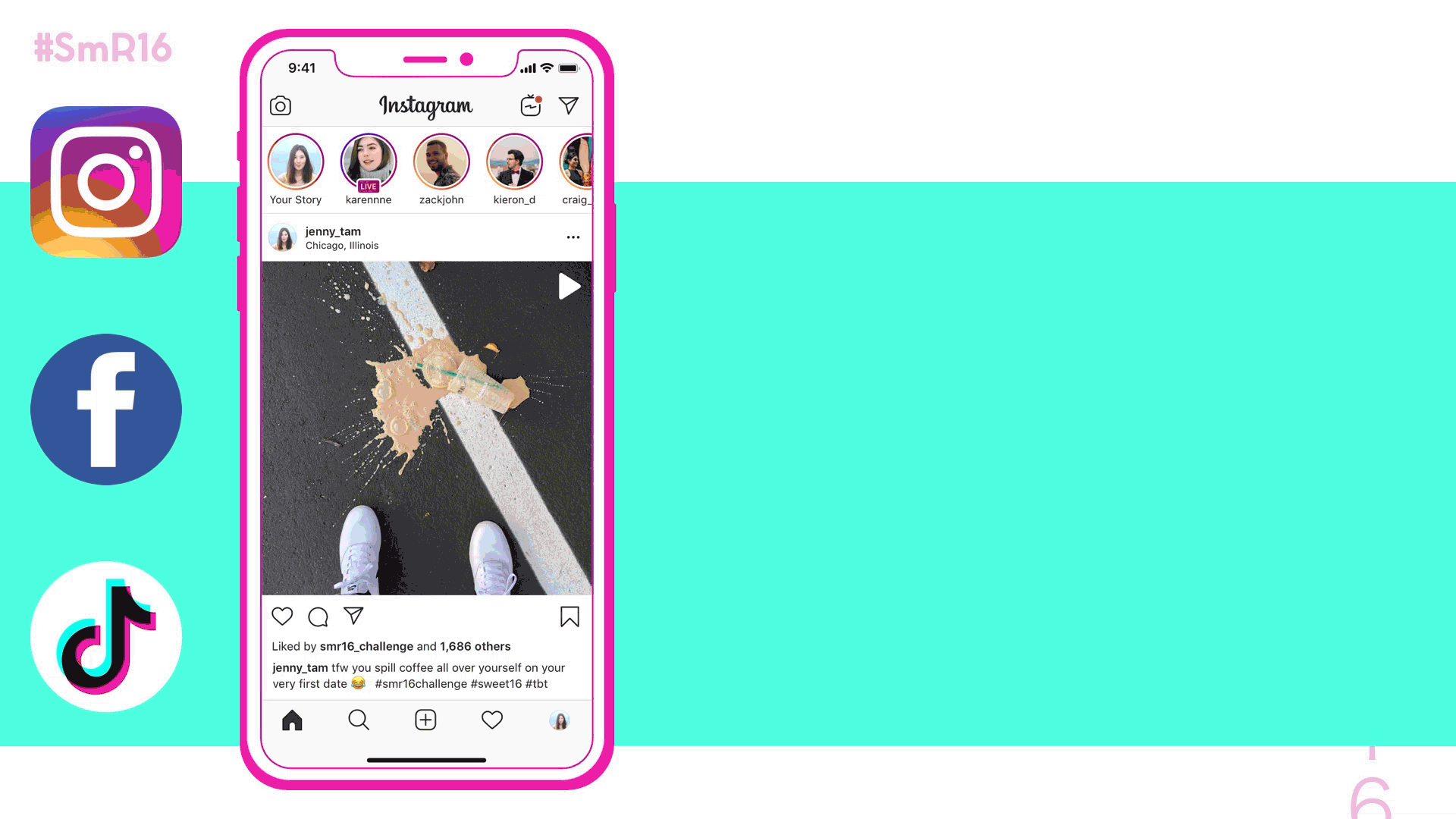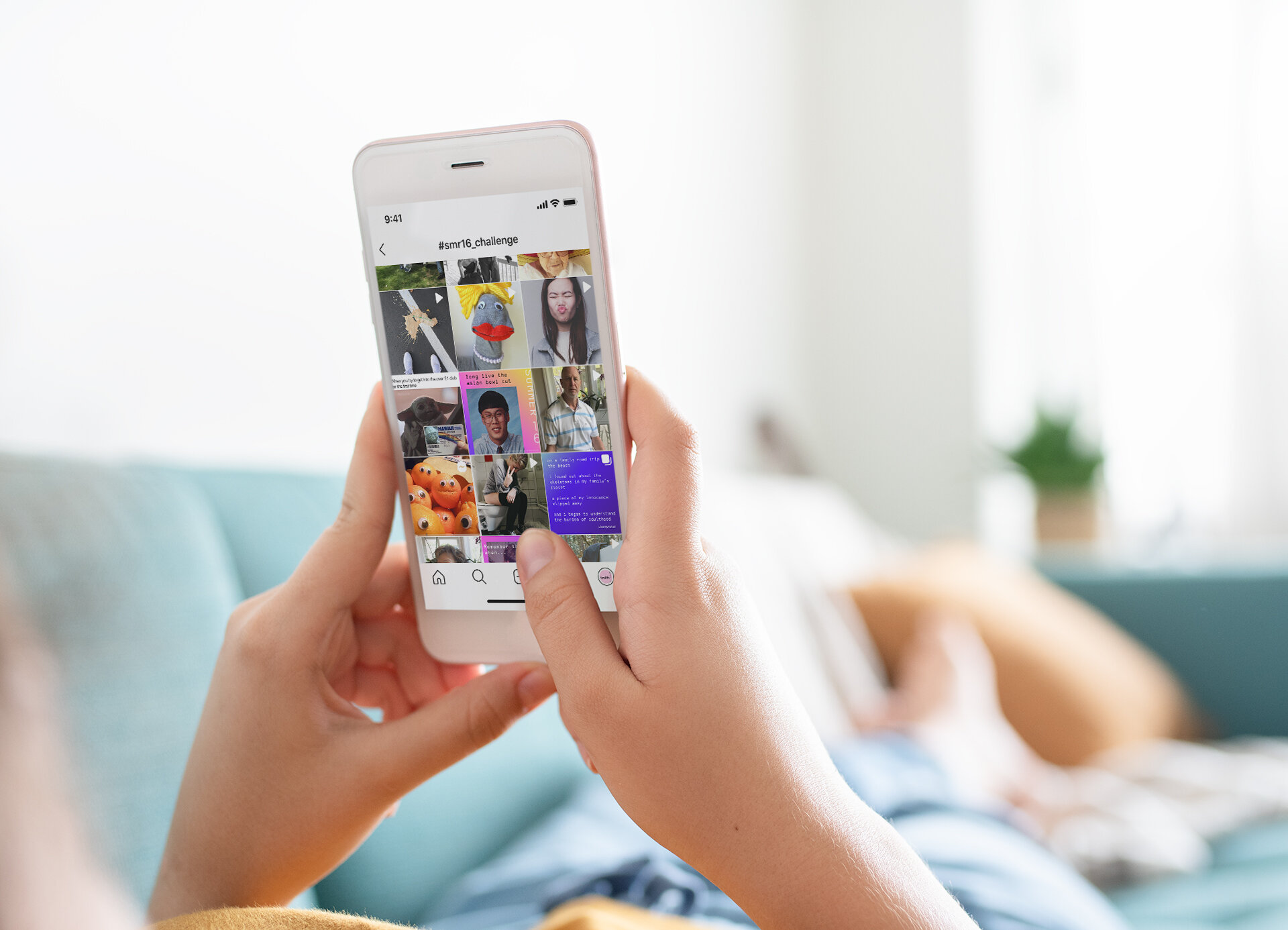Transcending Blue: Adolescent Interconnection & Empathy in the Age of Screens
Through her thesis, Transcending Blue: Adolescent Interconnection & Empathy in the Age of Screens, Catherine Weislogel examines how digital technology usage impacts adolescent social and emotional well-being. While all humans are susceptible to the effects of the omnipresence of technology in their daily lives, children and adolescents, in the critical stages of brain development, are the most vulnerable.
How can we transform the smartphone into a tool for human social and emotional development?
"Much of my thesis work, at its core, investigates how technology can be leveraged positively to benefit adolescent mental health care,” Catherine writes. “How can we transform the smartphone into a tool for human social and emotional development?" Her thesis explores how to support adolescents' journeys into adulthood through multiple avenues—from the everyday to the clinical. To do this, she has designed across the phygital spectrum, taking into account the merging of the digital and physical worlds in current culture and society, and recognizing the importance of both.
Pip: A Speculative Phone Charger
Wrapped in a deceptively cute package, Pip is a speculative cell phone charger that helps you take enforced breaks from your screen. When a user puts their phone in Pip's charging dock, the device activates a one-hour timer which locks the phone screen. If the user tries to retrieve their phone before the hour is up, Pip delivers a little shock. The more you reach, the more shocking Pip becomes. "Unlike the way my other thesis projects explored how the smartphone serves as a facilitator of integrated physical and digital experiences," says Catherine, "Pip investigates how to intervene in the physical and mental aspects of teen relationships with their devices. Looking at the smartphone as a barrier to adolescents engaging with the real-world due to their physical attachment to the object, I wanted to figure out a way to playfully remove the phone from the equation."
Arti: Therapeutic Creativity
Traditional talk therapy can be awkward and trying for adolescents as well as for the counselors working with them. When adolescents are working out identity and personality, creativity can serve as a powerful medium for articulating who they are and how they feel, despite struggling to get the words out. Arti is a set of four figurines designed to be canvases for creative, nonverbal expression for adolescents, while simultaneously acting as tools for a therapist to help engage their young clients. Arti's materiality as an object provides the structure of a physical form for the adolescent to handle and move. On the other hand, its blank facades offer an opportunity to customize and surfaces to manipulate at will. The client chooses whichever figurine they respond to the most. They then mark on or modify the surface of the figurines using easily accessible art or craft supplies, such as markers, paints, stickers, glue, etc., that the therapist has on hand in the office. In this way, Arti is both object and activity. First, it invites the user to engage in a creative process of their choosing. Then, it becomes an object to reference and hold throughout the therapy session. Ideally, Arti becomes a tool with which the adolescent client can communicate with their therapist and express how they feel.
Mishappy Hour: Making the Ridiculous Commonplace
Mishappy Hour is an iMessage app-based service that adds silly/ridiculous word scrambles into text and video chats to help adolescents with social anxiety overcome their fears of social mishaps. For one hour, all non-serious text communications are randomly subject to scrambling by the insertion of ridiculous words. Users choose from one of three modes. A regular Mishappy Hour occurs at a scheduled time, blast mode can be activated at any time for 30 min or 1 hr, and hit em up will scramble a single message. By forefronting the probability of communication mistakes, Mishappy Hour creates a safe space for adolescents to collectively experience mishaps, reducing the risk of interaction both virtually and in person. "My vision for this project," shares Catherine, "is to help adolescents overcome their fears to engage in more meaningful and fulfilling relationships for better long term health and wellness." By exposing users to feared outcomes in a fun, inclusive way, teens feel empowered to change avoidant behaviors and engage with their peers in order to build social skills and confidence.
SoMonki: Phygital Mental Health Care in Schools
While doing research for her thesis, Catherine found that over 50% of U.S. teens who have a treatable mental health condition don't receive treatment. And of the teens who actually do, many rely on our educational system for those services. "Unfortunately, schools are not always equipped to handle this," says Catherine. "Many of the school counselors and psychologists I spoke with during user research already feel like their caseloads are too high to properly address the mental health care component."
Over 50% of U.S. teens who have a treatable mental health condition don't receive treatment. And of the teens who actually do, many rely on the educational system for those services.
This is what drove Catherine to design SoMonki, a dual-facing mobile app for middle school psychologists, counselors, and social workers and the students they work with. On the student side, the app serves as a way to help adolescents practice social and emotional skills through mentorship and exercises. For mental health care providers, the app functions more like a client/caseload management platform. SoMonki utilizes a gamification element to help students stay engaged with the app. Points gained in the app can be exchanged for in-person rewards during their counseling sessions. Thus bringing together both in-person and digital to create a phygital mental health care experience.
#SmR16: Online Empathy Challenge
SmR16 is an online social media challenge, seeking to invoke intergenerational empathy through short-form digital storytelling. The steps are simple: 1) enact a memory from your 16th summer in 1 min or less, 2) share your story on social media, 3) tag your post with #smr16_challenge, and 4) tag 3 friends to continue the chain. People can be invited to participate in one of two ways. The first is through AirDrop invitation in a public space, such as a park or the train. The second is by being challenged by friends or family on one of three social media platforms: Instagram, Facebook, and TikTok.
After sharing a story of their 16th summer on social media and tagging others, they can then look at SmR16's social media accounts and the challenge hashtag. Shared memories and experiences then aggregate as a collective memory box for different generations. "Studies show that narrative and voice are two of the most powerful tools humans use for humanization and creating empathic connection. #SmR16 really aims to leverage them on a large scale," shares Catherine.
To learn more about Catherine Weislogel’s work, take a look at her projects in more detail at www.catsweislogel.com.


